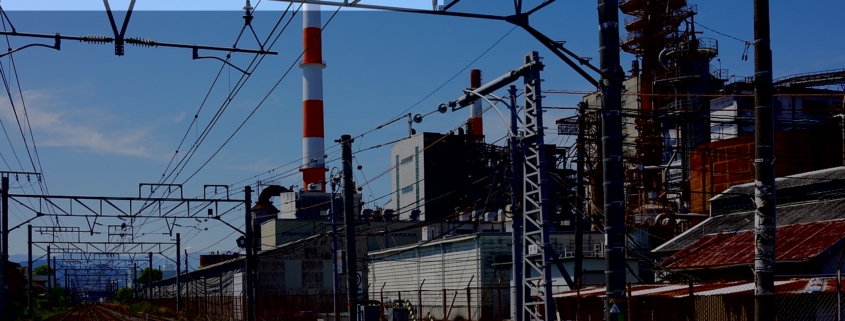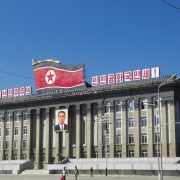What was the Income Doubling Plan in Japan?
Topic of Study [For H2 History 9174 Students]:
Paper 1: The Development of the Global Economy (1945-2000)
Section B: Essay Writing
Theme II Chapter 2: Transformation of East Asian Economies (Japan, 1947-1991)
A political crisis: The Anpo protests
After Japan restored industrial production to pre-war levels in the 1950s, the Japanese government made thorough plans to embark on trade liberalisation. The leaders knew that reintegrating Japan into the world economy was next step forward.
However, the government was beset by socio-political unrest, particularly the Anpo protests (安保闘争) in 1959-1960. These protests were staged in opposition to the revised United States-Japan Security Treaty of 1952. This Treaty allowed the Americans to maintain military bases in Japan that allowed them to defend the nation in the event of an attack.
Although the protests had failed to prevent the Treaty from being revised, the Cabinet under Nobusuke Kishi (岸 信介) resigned on 15 July 1960. Even President Eisenhower’s planned visit to Japan was cancelled. The protests had far-reaching implications on Japan’s political landscape.
The protests were so extensive, and the issues at stake so deeply felt because actors on all sides – the U.S. government, Japanese conservatives and government leaders, and the expansive antitreaty movement – elevated the new security treaty as the key to enshrining or resisting visions of a Cold War democracy in Japan. Anpo became the ultimate clash between competing visions of Japanese democracy, which seemed irreconcilable.
An excerpt taken from “Cold War Democracy: The United States and Japan” by Jennifer M. Miller.
Economic renewal: Enter Ikeda
Kishi was succeeded by Hayato Ikeda (池田 勇人). As Prime Minister, Ikeda assumed a more conciliatory stance towards the political opposition, placing more focus on advancing the Japanese economy instead. On 27 December 1960, the Ikeda Cabinet reached a decision to launch the ‘Income Doubling Plan‘.
The Plan aimed to double the national income of Japan in ten years. To do so, several targets had to be reached. For instance, Japan had to reach 26 trillion yen in Gross National Product (GNP) [at the fiscal year 1958 price] within the next ten years. Also, Ikeda sought to attain full employment and raise the living standards of the Japanese population.
In summary, the ‘Income Doubling Plan’ was a long-term economic development plan to coordinate and systematise policies to facilitate industrial rationalisation, so as to achieve rapid economic growth.
The [Income Doubling Plan] was designed explicitly to quiet political protest after mass demonstrations against the government’s foreign policy. The Income Doubling Plan reaffirmed government responsibility for social welfare, vocational training, and education and increased spending considerably in these areas. It sought to eliminate low-wage jobs and regional income disparities. Yet the plan’s greatest innovation was to redefine growth and to include Japanese consumers as well as producers.
An excerpt taken from “Postwar Japan as History” by Andrew Gordon.
A force to be reckoned with: Japan as an economic powerhouse
True enough, the Ikeda Cabinet’s ambitions were realised. In the 1960s, Japan’s GNP grew at an annual rate of 10.6 percent in real terms. Evidently, Japan had surpassed the United States, which grew at an annual rate of 4.1 percent. In 1970, 30 percent of Japan’s GNP was attributed to the manufacturing sector, which was largely driven by the rise of the heavy and chemical industries. By the late 1960s, Japan became the world’s second largest economy, outpacing West Germany.
From being about a third of the American economy, measured in terms of GDP, in 1973 (and just over a tenth in 1950), the Japanese economy had become 40 percent as large by 1989. Japan first emerged as an industrial giant, with particular strength in electronic products, cameras, motorcycles and later motor cars, iron and steel, and shipbuilding; and a huge surplus in its manufactured goods trade balance, overtaking West Germany in the 1970s. The rise of Japan as a financial power, and of Tokyo as an international financial centre, was thus above all due to Japan’s rise to the rank of economic superpower.
An excerpt taken from “Crises and Opportunities: The Shaping of Modern Finance” by Youssef Cassis.
Join our JC History Tuition to learn more about the economic transformation of Japan and China under the theme of The Global Economy. The H2 and H1 History Tuition feature online discussion and writing practices to enhance your knowledge application skills. Get useful study notes and clarify your doubts on the subject with the tutor. You can also follow our Telegram Channel to get useful updates.
We have other JC tuition classes, such as JC Math Tuition and JC Chemistry Tuition. For Secondary Tuition, we provide Secondary English Tuition, Secondary Math tuition, Secondary Chemistry Tuition, Social Studies Tuition, Geography, History Tuition and Secondary Economics Tuition. For Primary Tuition, we have Primary English, Math and Science Tuition. Call 9658 5789 to find out more.











